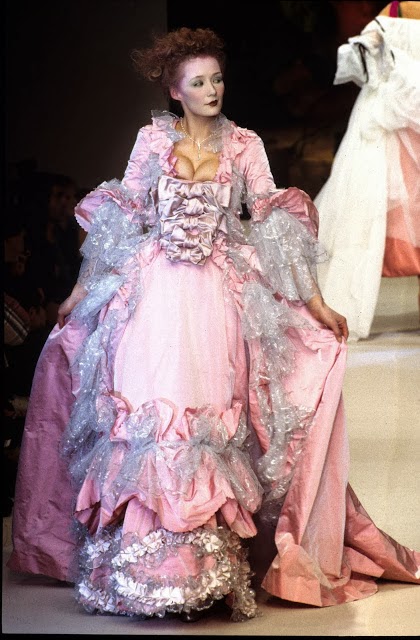The use of personal rings was present from the time of the Egyptians, the Incas or the Romans. The rings of these people accustomed to put them engravings of gods and emperors, which served to demonstrate the power of whom wore, and only priests, emperors or consuls were worthy of such privilege.
 |
| Ring set of Ramses II, Musee du Louvre, Paris |
Rings of various sizes and with various incisions showed the degree of Roman politicians, while rings appearing divinity, were worn by pharaohs and priests as protection, but also as a symbol, given directly to the divine strength, its ability to protect its people and knowing guide.
 |
| Ring of the Fisherman, wore by Pope Benedict XVI |
Rings are the most common and perhaps the most evocative pierces of jewellery. The main sign of love to mark weddings, remember the dead, show a religion faith, a fashion accessory, etc.
Rings were traditionally made from precious metals such as gold and silver, alongside the cheaper alternatives of bronze, iron, or tin. Another options were gemstones, enamels, ivory, and for modern jewellers, plastics, acrylics, etc.
Medieval Style.
 |
| Lady Joan Beaufort, Paris, 1430-40 |
 |
Mary of Burgundy, Duchess of Brabant, 1477
|
In an age when magic, science and religion were intertwined, a ring could be worn as a sign of faith, as an amulet or to cure illness. The gift of a ring could, as now, signify love or cement social relations.
Some gemstone means a religion and symbolic powers. For example, the Sapphires, they were offen used on episcopal rigs, required to be of gold set with an uncut stone, which were given to bishops at their consecration. Sapphire rings have been discovered in the tombs of several English bishops, including one allegedly found in the grave of William Wytlesey, Archbishop of Canterbury, who died in 1374.
Romantic inscriptions known as posies, often written in french or latin, the languages spoken by educated people across Europe, decorated many medieval rings.
Gold ring, France 1500-30. Outside of hoop inscribed "Ung temps viandra" (A time will come): the inside "mon desir me vaille" (My longing keeps me awake).
18th Century
In the 18th century the diamond ring became an essencial accesory for the well-dressed gentleman.
The diamond ring appears frequently in contemporary portraits, including in one Johann Christian Bach (1735-82) in which the elegantly dressed composer holds a sheet of music and wears a ring, probable set with a diamond, on his little finger.
 |
| Johann Christian Bach. |
20th century
In twentieth century brought innovation and diversity in jewellery design. The Arts & Crafts movement begun in Britain in the last decades of the 19thC. Artists rejected industrial manufacturing and its effects on urban life, and looked to the Middle Ages for inspiration, following the design principles of medieval guilds.
Ring belonged to May Morris, daughter of the socialist, artist and designer William Morris. This ring shows the influence of medieval designs and also traditional Jewish marriage rings.
 |
| In the Boudoir by Dolf van Roy |
The art of Egypt, China and India influenced Art Deco jewellers, who brought exotic combinations colours and style. Arresting colour combinations were also inspire by the stage stage costume that Leon Bakst created for Diaghilev's Ballets Russes, which performed in Paris from 1909.
Some Art Deco Jewellers took inspiration from abstract art and the modernist principles of the Bauhaus School of Germany.
 |
| An ilustration from the 1927 edition The Delineator, a popular american women's magazine |
 |
| The romance of the machine and the speed ans dynamism of modern metropolitan life was reflected in these jewellery designs. Left: gold and chrome ring set with diamonds by Jean Depres. Right: platinum with coral, diamonds and innovative black plastic by Alexandre Marchak, Paris, 1920's. |
 |
| American Actress Irene Dunne |
The 1950's and 1960's Europe saw a desire to break with tradition in architecture, sculpture, painting and jewery.
Restrictions on the supply of gold continued in Britain after the war ended in 1945. The post-war optimism of the 1950's gradually spread to the jewellery industry as clients returned to the mayor jewellery house of Europe and America, like Boucheron and Asprey.
Hollywood stars such as Ginger Roger, Liz Taylor or Grace Kelly promoted the fashion wearing Fantastic Jewels in films and their social life.
 |
| Ginger Roger wears a ring set with a large square gemstone, 1948. |
In the 1970's precious metals were another materials, like acrilic. For instance, Wendy Ramshaw won the Council of Industrial Design awars in 1972 with designs based on geometric forms, and inspired by urban archtecture and the space age.
 |
| Wendy Ramshaw: Paper cardboard and plastic jewellery from mid-60's. |
 |
| Vintage colourful laminated rings, mid-1960's |
 |
| The most famous engagement ring in the british monarchy. |
 |
Kim Kardashian's 20.5-carat Lorraine Schwartz ring with an emerald-cut centre stone and two 2-carat trapezoid stone. Her 72-days husband, Kris Humphries, helped design the ring.
|
The first Mademoselle Chanel's jewellery collection was in 1933, that symbolised the brand's identity.
The New Ultra ring by Chanel, in 18K white gold, black ceramic and diamond, 2015


















































